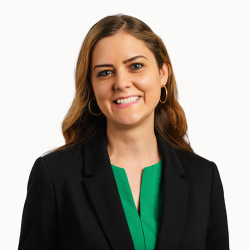When Winter Depression Hits Hard
Week after week of gray skies, cold temperatures, wet weather and short daylight hours can take a toll on anyone’s good humor. But for some, these conditions cause a more significant downturn than a passing case of the blues.

This kind of annually recurring depression is aptly named seasonal affective disorder or SAD; and it affects many residents of the Pacific Northwest, where gloomy winter weather is the norm and there is more variation in seasonal light. SAD is a form of depression that occurs during the winter months and often disappears in the spring. The symptoms of SAD partly match those of nearly any type of depression. They include fatigue, low energy, feelings of hopelessness, a persistent unhappy mood, difficulty concentrating and a lack of interest in normal activities.
What’s different about SAD is that it also has a number of atypical symptoms of depression: an increased desire to sleep, increased appetite and particular cravings for sweets and carbohydrates, accompanied by weight gain. SAD also differs in magnitude from the mild blues that many people experience occasionally during the winter, when we find ourselves less able to be outdoors or to exercise or are strained by the holidays. SAD is distinguished by its pattern of arising and subsiding at similar times each year.
The treatments for SAD are antidepressant medications, light therapy or a combination of the two. Light therapy—where a patient sits in front of a bank of specialized, bright white fluorescent lights mounted in a box backed by a diffusing reflective surface—tricks the body into behaving as it would when exposed to bountiful sunlight. While light therapy is considered safe, it should be conducted under the guidance of a sleep specialist or other qualified practitioner. A patient should first be seen by an optometrist to determine whether there is any risk to their eyes. Typical side effects of light therapy include eyestrain and headaches.
For mild symptoms of SAD, remember to get outdoors during the day, even when it’s cloudy. Rearrange your home and workplace to receive more sunlight and brighten up your indoor lighting. Even though it may be tempting to stay home on a dreary day, try to stay involved with your normal social activities.
It’s also a good idea to decrease your intake of carbohydrates somewhat during the winter months, because loading up on carbs can adversely affect your sleep. And getting enough sleep—seven and a half to eight hours a night—can have a positive impact on mood.
The happy news about SAD is that it can be overcome. It is treatable, and the treatments result in a greater quality of life. If feelings of sadness of any kind persist for more than two weeks, seek treatment. And that doesn’t just apply to SAD, but to depression in general.
Make an appointment with your primary care provider if you believe you have SAD. You can also learn more about mental and behavioral health at Overlake, or call 425.688.5460.
If you or a loved one are experiencing thoughts of suicide, mental health crises, substance use crises, or any other kind of severe emotional distress, you can also call or text 988 to be connected to the National Suicide Prevention Lifeline (NSPL).









